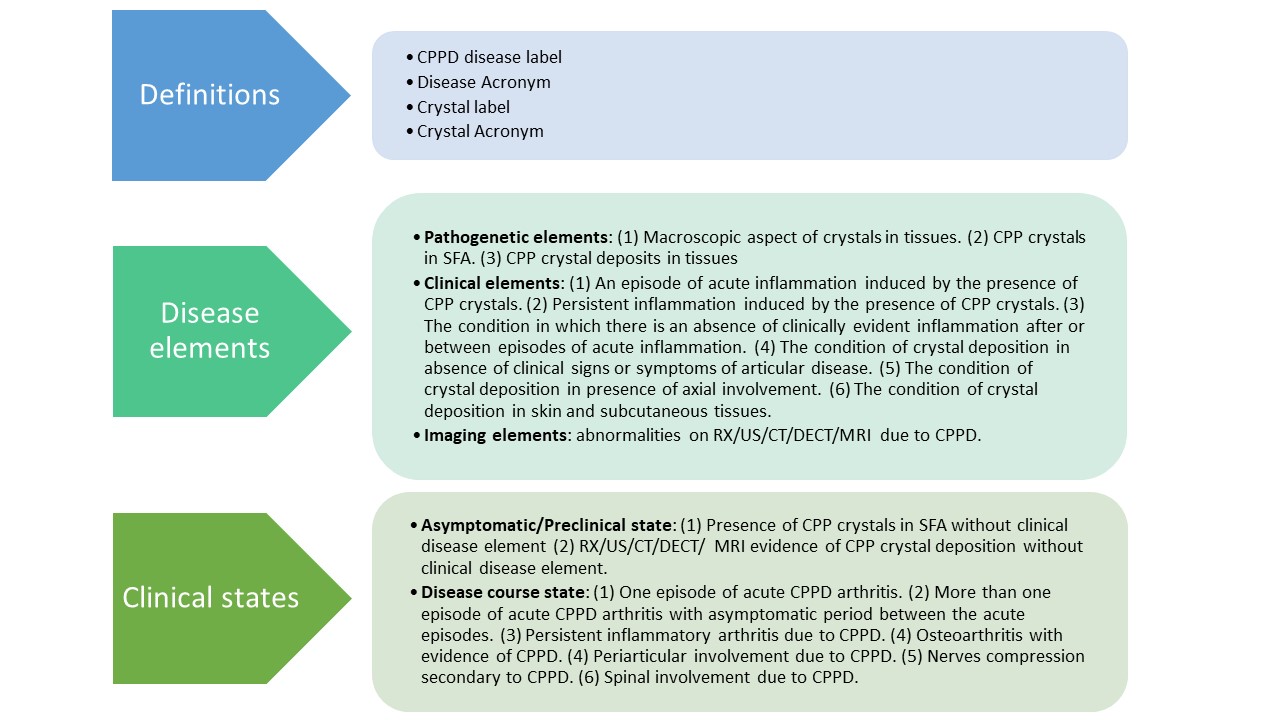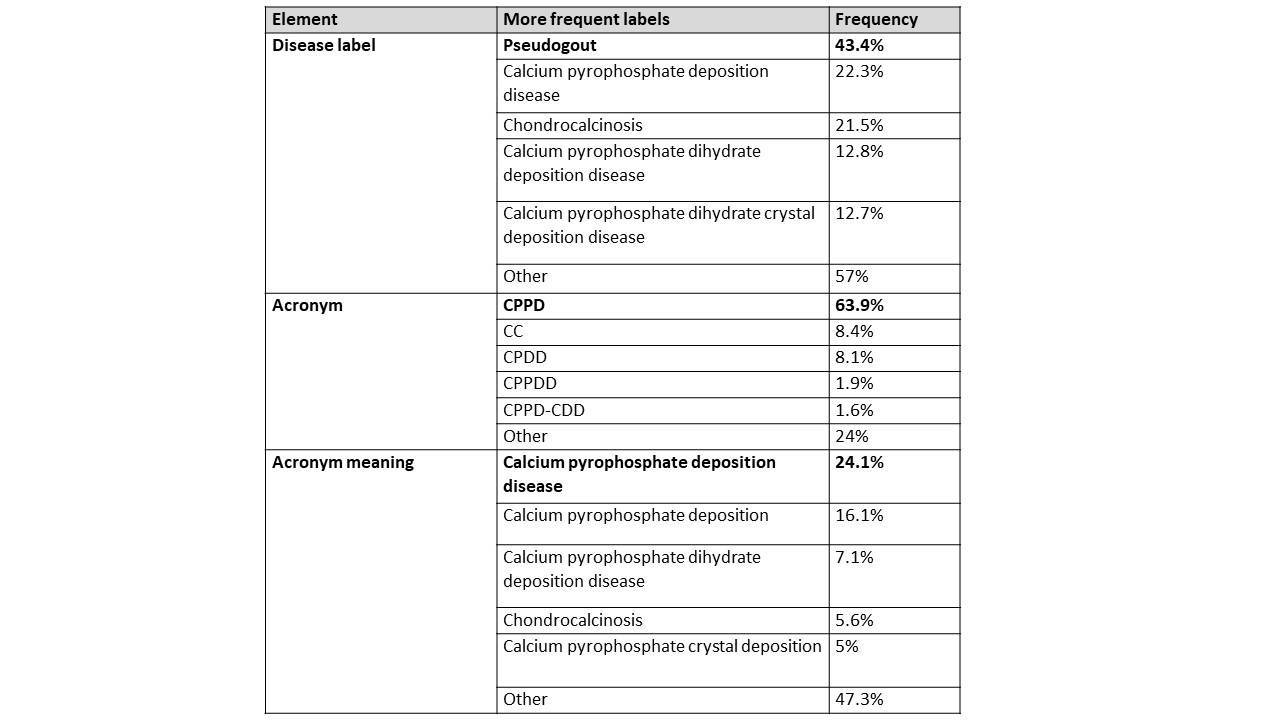Session Information
Date: Monday, November 13, 2023
Title: (1100–1123) Metabolic & Crystal Arthropathies – Basic & Clinical Science Poster II
Session Type: Poster Session B
Session Time: 9:00AM-11:00AM
Background/Purpose: Despite prior attempts at standardising terminology of calcium pyrophosphate deposition (CPPD) disease (including the 2011 EULAR recommendations for CPPD terminology and diagnosis), many different terms are still used interchangeably to describe the disease, its elements, and its states. This confusing nomenclature has important implications for research and for patient care. The Gout, Hyperuricemia and Crystal-Associated Disease Network (G-CAN) has developed a CPPD Nomenclature Project which aims to achieve international consensus about the nomenclature of CPPD. In this first step of the project, the aim was to identify the definitions, the disease elements and the clinical states of CPPD and their corresponding labels in the scientific literature.
Methods: A systematic literature search was performed in the PubMed database starting from 01/01/2000 to 31/01/2022. The search was restricted to studies on humans and in the English language. Eight reviewers independently extracted terms related to disease definition, aetiology, pathogenesis, clinical presentation, imaging features and clinical states of CPPD. An a priori list of disease elements and clinical states was generated by the authors and further elements were added during data collection as appropriate. Labels for each identified disease element and clinical state were extracted and analysed to determine their frequency.
Results: A total of 2392 articles were identified using the search criteria, 1028 articles were included. The complete list of evaluated elements is showed in Figure 1. There was great inconsistency in the terminology used for the disease, its elements and its states. The 3 most common labels used to identify the disease were “pseudogout”, “calcium pyrophosphate deposition disease” and “chondrocalcinosis”. The most common acronym used was “CPPD”, mostly with the meaning of “calcium pyrophosphate deposition disease” or “calcium pyrophosphate deposition” (Table 1). The 2 most commonly used labels describing “an episode of acute CPPD arthritis” were “pseudogout” (31%), and “acute calcium pyrophosphate crystal arthritis” (10%). For “more than one episode of acute CPPD arthritis”, “recurrent pseudogout” (17%) or “recurrent arthritis” (10%) were the most used labels. “Chronic calcium pyrophosphate crystal arthritis” (13%) and “pseudo-rheumatoid arthritis” (11%) were the most commonly used labels to describe “persistent inflammatory arthritis due to CPPD”. The most used labels used to identify “osteoarthritis with evidence of CPPD” were “pseudo-osteoarthritis” (11%) and “calcium pyrophosphate crystal deposition with osteoarthritis” (9%).
Conclusion: These results demonstrate the variability and lack of precision in the labels used to describe CPPD disease. The next steps of the project will be to achieve agreement about CPPD disease nomenclature through a Delphi exercise and consensus meeting, and to develop an easily understandable common language definition to increase scientific understanding and awareness of this condition and to facilitate communication with patients.
To cite this abstract in AMA style:
Sirotti S, Jauffret C, Cipolletta E, Cirillo D, Ingrao L, Lucia A, Adinolfi A, Pireddu D, Filippucci E, Pascart T, Tedeschi S, Terkeltaub R, Dalbeth N, Filippou G. The Nomenclature of Calcium Pyrophosphate Deposition (CPPD) Disease – Results of a Systematic Literature Review for the Gout, Hyperuricemia and Crystal-Associated Disease Network (G-CAN) CPPD Nomenclature Project [abstract]. Arthritis Rheumatol. 2023; 75 (suppl 9). https://acrabstracts.org/abstract/the-nomenclature-of-calcium-pyrophosphate-deposition-cppd-disease-results-of-a-systematic-literature-review-for-the-gout-hyperuricemia-and-crystal-associated-disease-network-g-can-cppd/. Accessed .« Back to ACR Convergence 2023
ACR Meeting Abstracts - https://acrabstracts.org/abstract/the-nomenclature-of-calcium-pyrophosphate-deposition-cppd-disease-results-of-a-systematic-literature-review-for-the-gout-hyperuricemia-and-crystal-associated-disease-network-g-can-cppd/


